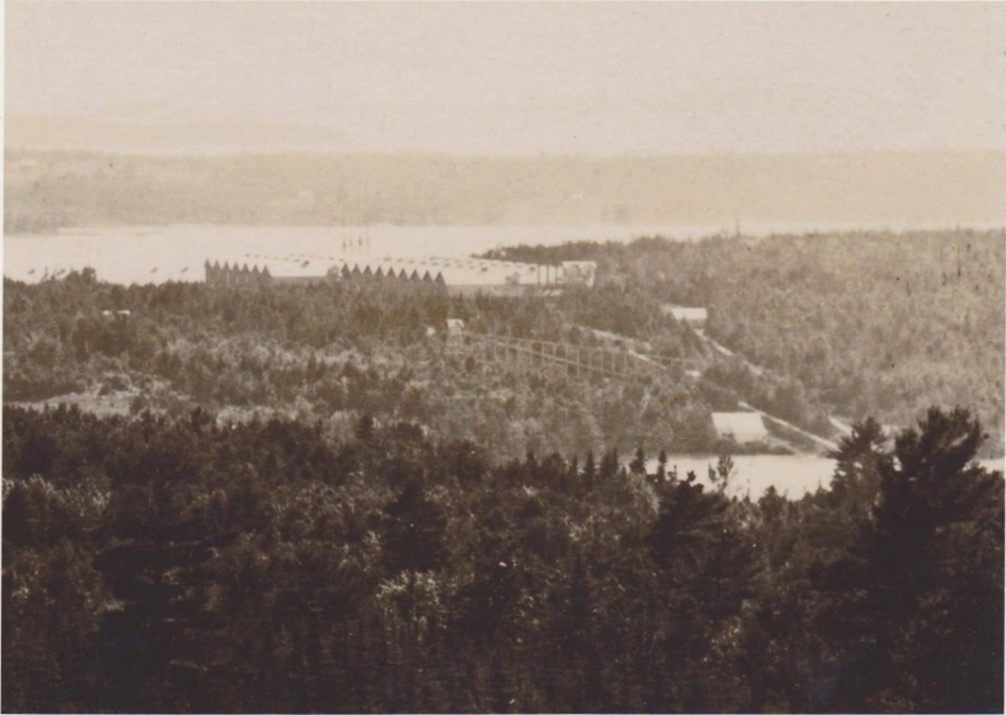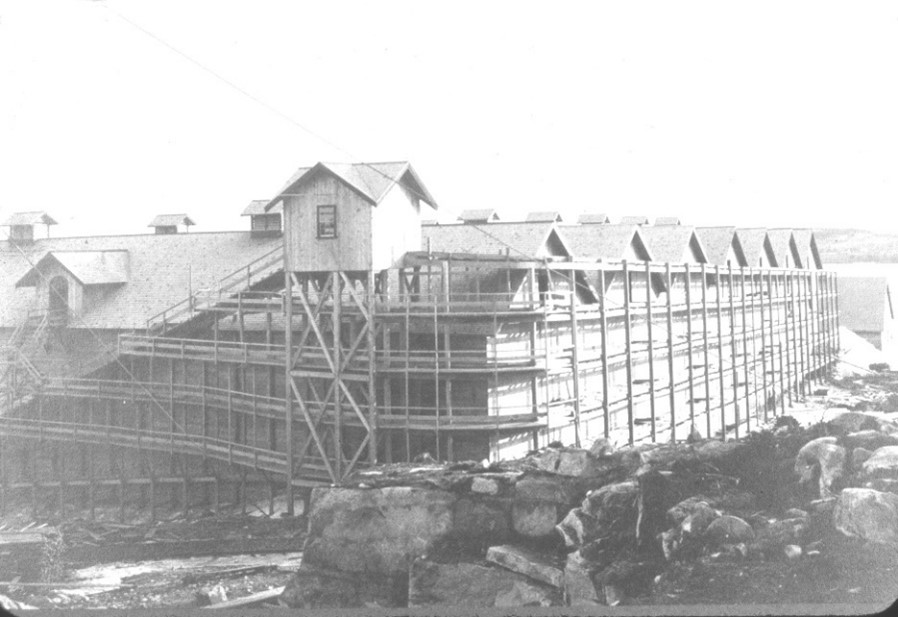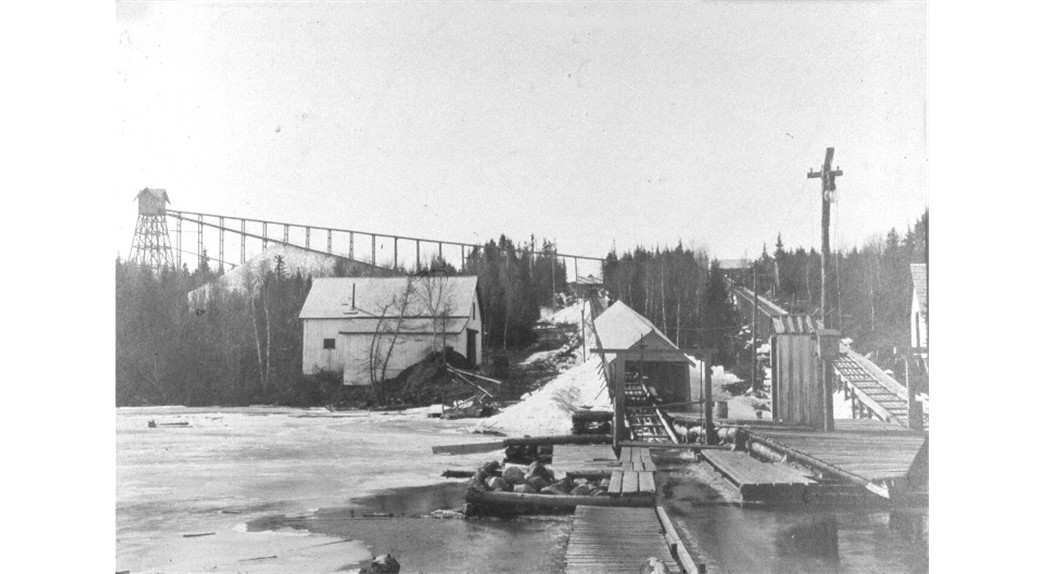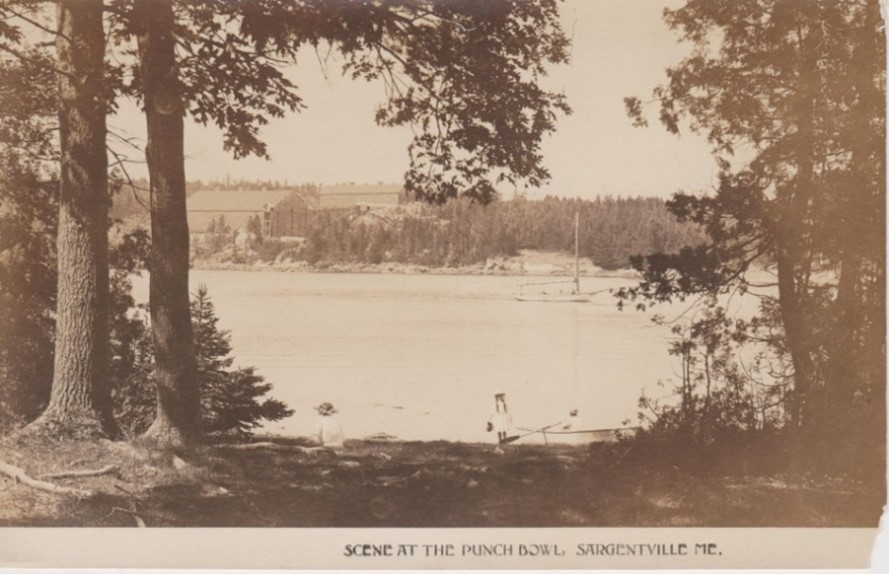Maine Lake Ice Company-The Ice Works (BUS.13)
Photos and text about the Maine Lake Ice Company-The Ice Works
The Maine Lake Ice Company’s Natural Ice Plant in Sargentville, Maine
Digital Images Donated by Ed Chapin, Sylvia Conner Wardwell, Diana Marston Wood, and Pam Simmons

Horse drawn plows cut grooves that marked where the ice was to be cut. The ice company claimed that this ice was possibly the best in the world as it came “from a magnificent spring-water lake, about three miles long and about ¾ of a mile wide, situated two thousand feet from tide water at Eggemoggin Reach where a fine harbor is found.”1

Huge ice storage buildings lay between Walker Pond and Eggemoggin Reach at the Punch Bowl. Ice blocks, weighing about 350 pounds each, were cut from Walker Pond, moved up to the storage houses and then moved down the other side of the hill to the deep water docks at the Punch Bowl where it was picked up by ocean-going schooners.

This is the equipment that generated power to run the conveyors and other equipment needed to harvest, store and load the ice.

The runways brought the ice into the storage houses where it was switched to an elevator and then to the several rooms or “galleries” within the building. The tonnage capacity of the main runway was about 12,000 tons in ten hours.

The runways from the pond to the ice houses were about 800 feet long with a rise of 83 feet. From the ice houses down to the sea at the Punch Bowl was a distance of about 1200 feet with a fall of 100 feet.

The walls of each gallery in the storage houses had a ten inch layer of sawdust protected by a dead air space, and the ice was covered with a thick layer of hay.

A schooner, probably the Fannie Palmer, at the ice works dock. Most of the ice went to Washington and Baltimore where the company had storage stations but some went to ports as far away as the Bahamas, West Indies and, possibly, even to India.2

The ice company was in business from 1900 to 1916. Each winter, when the buildings were filled, the ice cutting had to end. Sometimes local men would then get work by going to states as far away as New Jersey to cut ice and run the equipment needed to move and store it.
______________________________
1 Information about the Maine Lake Ice Company comes from a pamphlet created by that company. The pamphlet, which is in the private collection of Mrs. Charles K. Foster, is entitled “Lake Winneagwamauk” and copied portions are filed in the Sargentville Library Historical Archives.
2 Lee, John R., Down East Magazine, March 1971, pp. 44-47.







